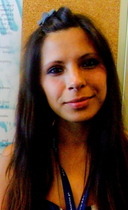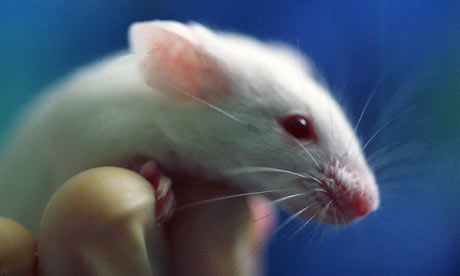Applying to PhD Programs in the USA
Finding a School, Taking the GRE / TOEFL, and writing Personal Statements
In October last year, I had to start thinking about my future. Since I was already a year into my master’s studies, I had to determine what I wanted my future to be like. We often think about those things but when the crunch sets in, the reality does hit us hard. Decisions need to be made! The options were to further pursue my education or try to get a job in the field of sport and exercise psychology back home in Sarajevo, Bosnia and Herzegovina. A realization that there is a very slight chance of finding my ideal job back home, combined with my desire to continue to learn more about the field I fell in love with during my master’s studies, made me come up with a decision to apply to PhD programs in the field of sport and exercise psychology in the US. This decision, came after much contemplation. Not to mention, it was a big bite to chew considering I only had a few months to take the GRE and complete the application process. For those who are thinking of applying to PhD programs in the US, I would have to advise you to make this decision long before the application deadline. Application deadlines in the US are earlier than most of the ones in Europe. In my experience, most PhD program application deadlines are either December 1stor January 15th. Additionally, I had to continue working on my master’s studies, so my academic life during the months of applying to PhD programs became very challenging. I realized that what I had learned in my master’s program had given me the skills to be able to juggle all of those things at once.
In order to select the schools and programs I was going to apply to, I talked to some of my current mentors. They gave me a great guidance as to which schools/programs fit my future career goals. I also investigated potential mentors at various schools in order to identify those with whom I had a desire to work. That helped my selection process in terms of what schools I was going to apply to. I chose those programs that had well-established sport psychology programs, which had ongoing research that fully fit my research interests.
As far as the actual application process, it would be an understatement to say that it was challenging. I found myself overwhelmed. There was too much information, too many rules. I was lucky to have a sister who had recently earned her PhD in the US, so she was able to advise me on many things and what to focus on. One helpful thing was first choosing the programs I was going to apply to, and then organizing the required information into folders and files, collecting information from schools’ and programs’ websites. That way, I was able to start collecting the necessary documentation and preparing for the GRE simultaneously. Another tip is to also start studying for the GRE early, and schedule an appointment to take it as early as possible.. Moreover, depending on the closest city where one can take this exam, the computer-based option may not be possible, but only the paper-based one. My advice, take the computer-based GRE, as that gives you a little more privacy when taking the exam. I obtained a Kaplan GRE book to prepare for the exam. This book was helpful and provided me with practice exams which I had taken to prepare for the real thing.
If you are a non-native English speaker, you may also have to take a TOEFL exam.. I had TOEFL exam scores from when I was applying to the Erasmus Mundus program, so I reported those scores: which are valid for two years. All scores, GRE and TOEFL, have to be reported officially by the testing company. However, you can report up to 4 free scores at the end of the exam (both GRE and TOEFL), so try to decide what schools you are applying to before then.
During the application process, I realized that many schools require very similar things. Once you get a hang of it with a couple of schools, it becomes easier. Of course, some programs ask for specific things, so those were a bit of a curve ball. However, I have to strongly advise you on asking your professors or other associates for their recommendation letters as early as possible. They are very busy people, so do give them time. It is your responsibility to remind them about recommendation letter deadlines (yes, let’s face it, we are not the most important people in their lives)!! Most schools have their applications online now, so you can upload necessary documentation instead of mailing it. Some documents, i.e. official transcripts, will have to be mailed, though. If you are planning on pursuing additional education after your current program, it is a good idea to pay attention to how well you are doing in your classes. Schools ask for official transcripts so they do care about your grades, as should you probably. :)
I also invested some time in finding good tips for writing strong letters of purpose/personal statements. They all seem to agree on one thing: use specific examples of how you accomplished something that would make you a suitable candidate for that program. Do not shy away from using some personal stories about yourself, as long as they make a point you are trying to emphasize. Additionaly, do not put everything you can possibly put about yourself in a personal statement: choose wisely. Think about what makes you different from many other candidates.
After finishing with the application process, I felt like a heavy stone has been lifted from my shoulders. I had invested a lot of time and energy into this process, so I sincerely hope it will pay off. Luckily, I will keep busy while waiting for decisions from my prospective programs, as I have to work on my master’s thesis. Good luck to everyone who is applying and I hope this information will be helpful to you!

Adisa Haznadar is a second year master student in sport and exercise psychology at the University of Thessaly in Greece. She completed her Bachelor in Psychology (2009) at the University of Sarajevo, Bosnia and Herzegovina. Her area of interest and current research area are psychological skills and their implementation; mainly self-talk.
a link to understand the procedure...
http://aegedu.com/blog/how-to-apply-for-phd-usa/
a link to understand the procedure...
http://aegedu.com/blog/how-to-apply-for-phd-usa/


















